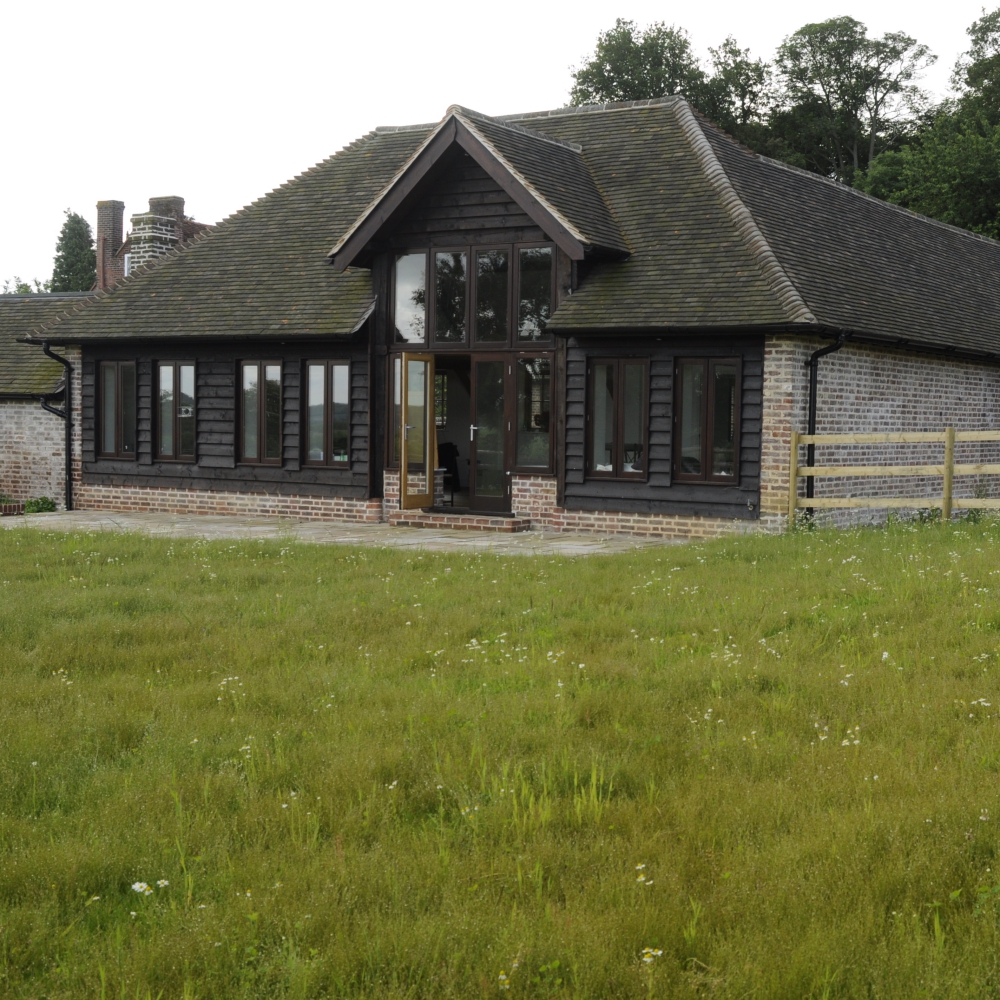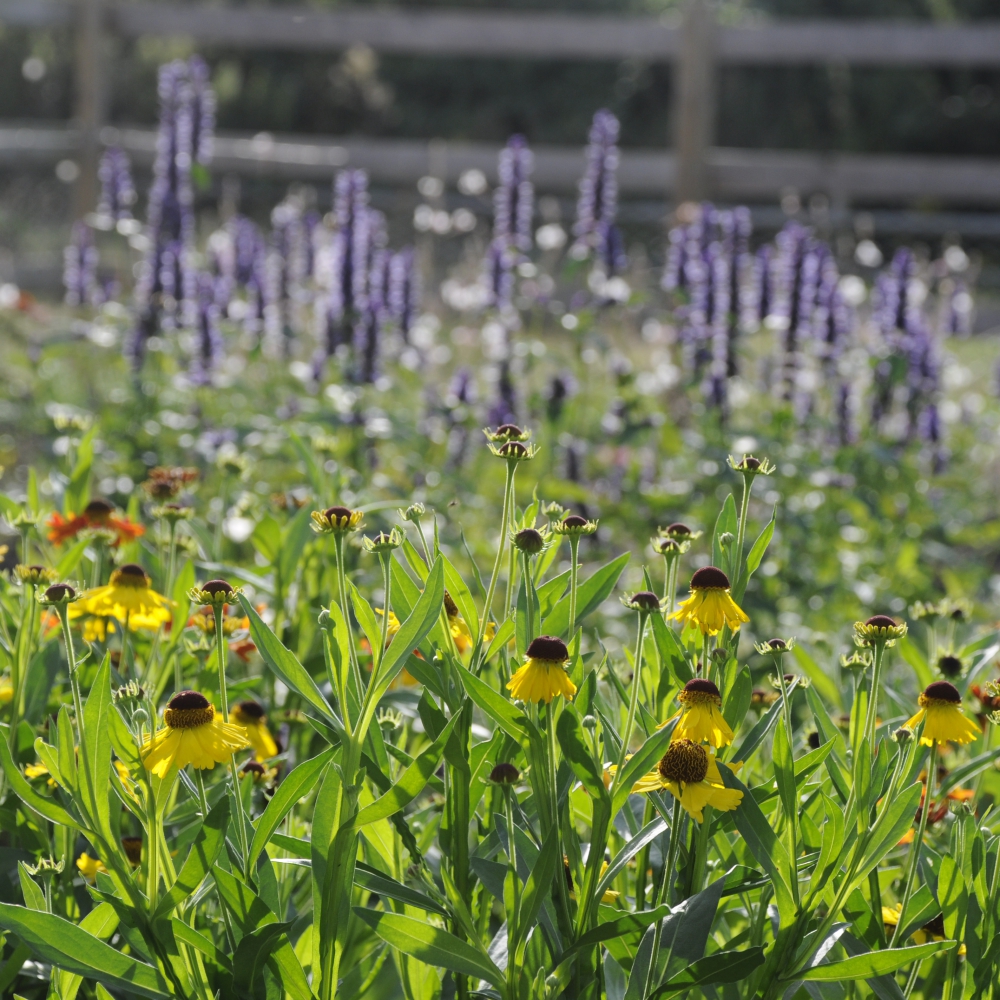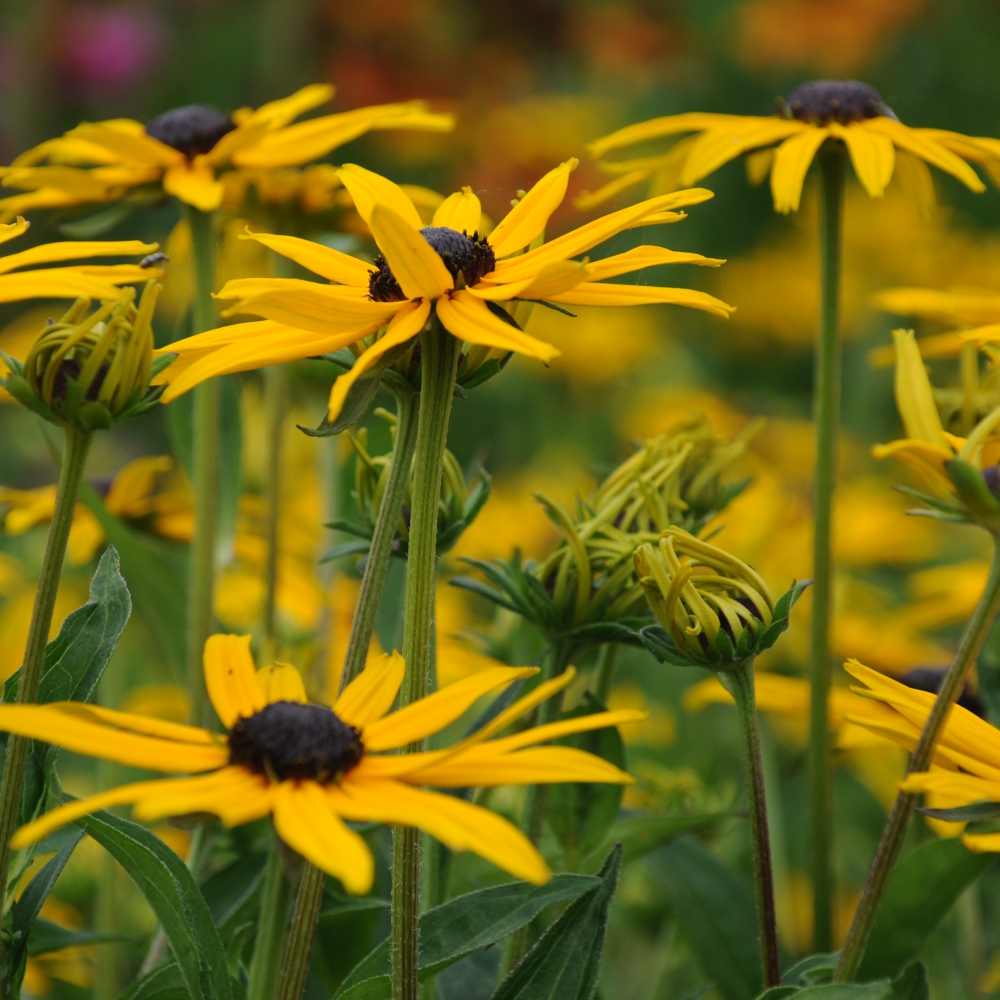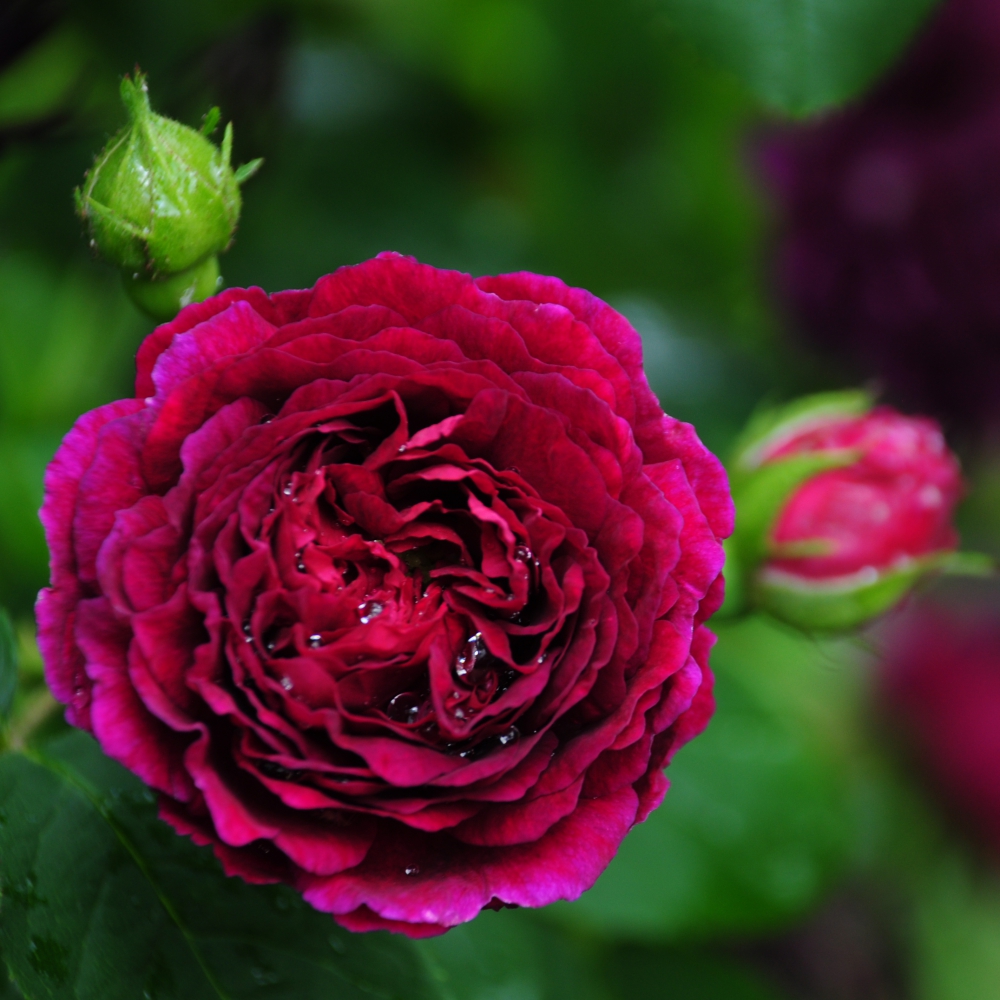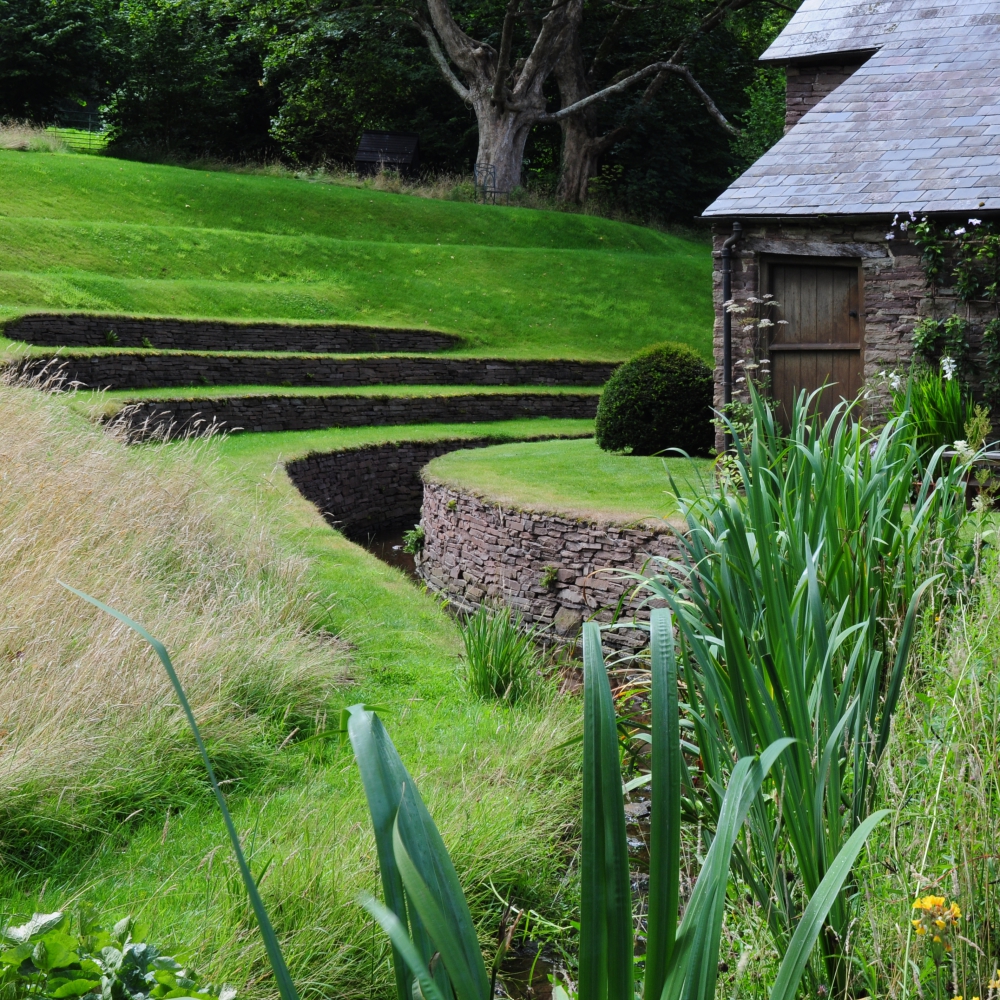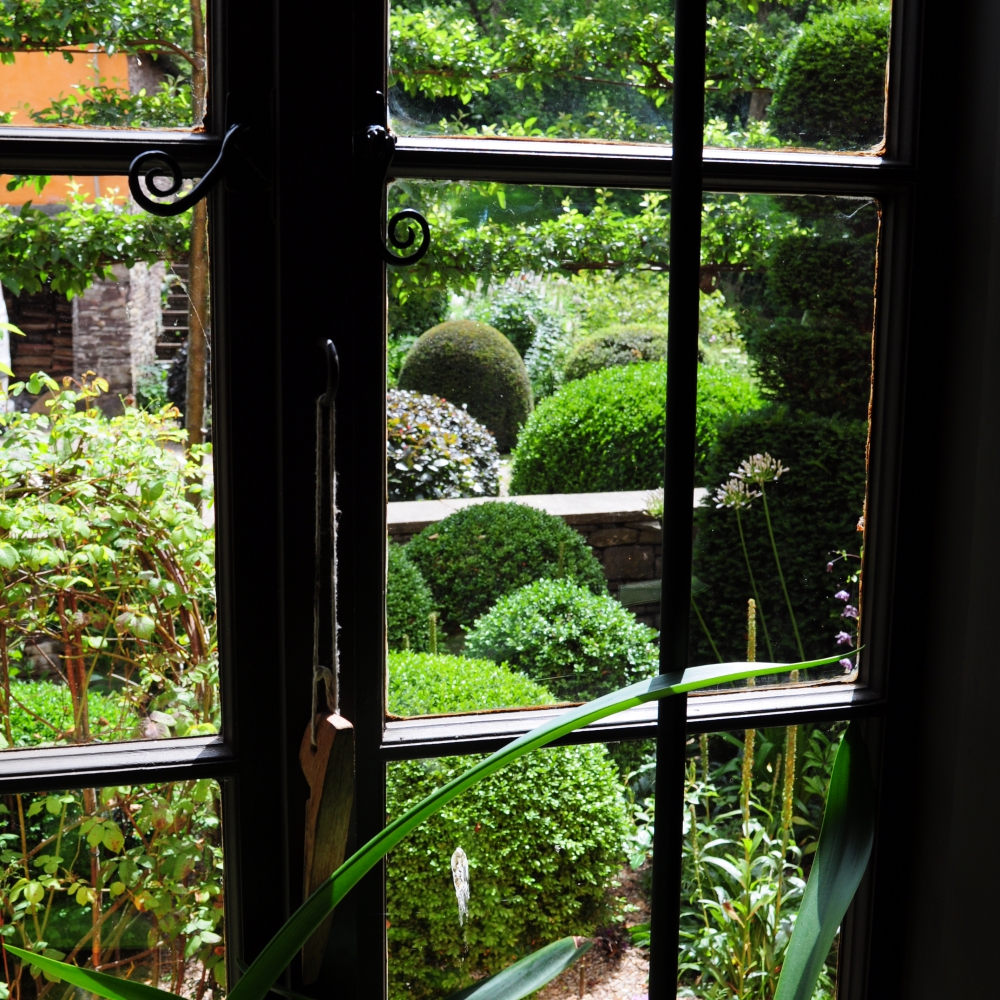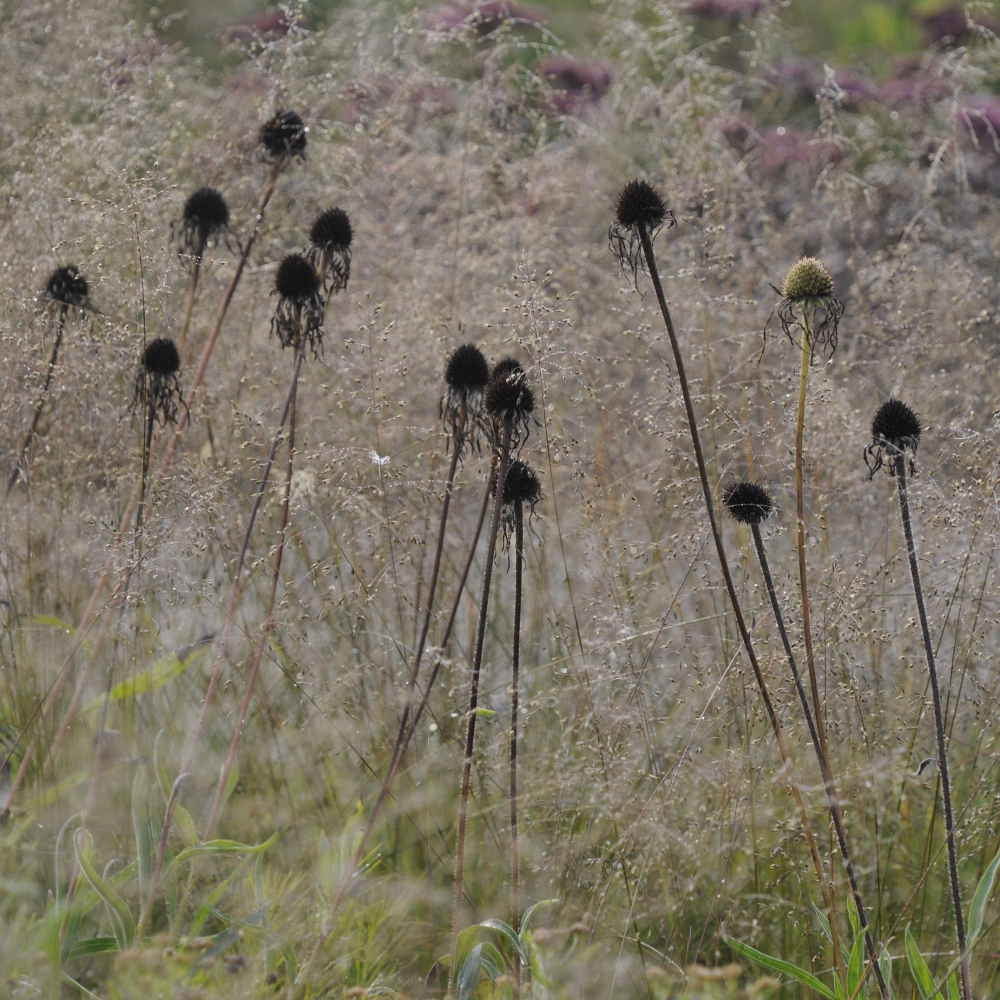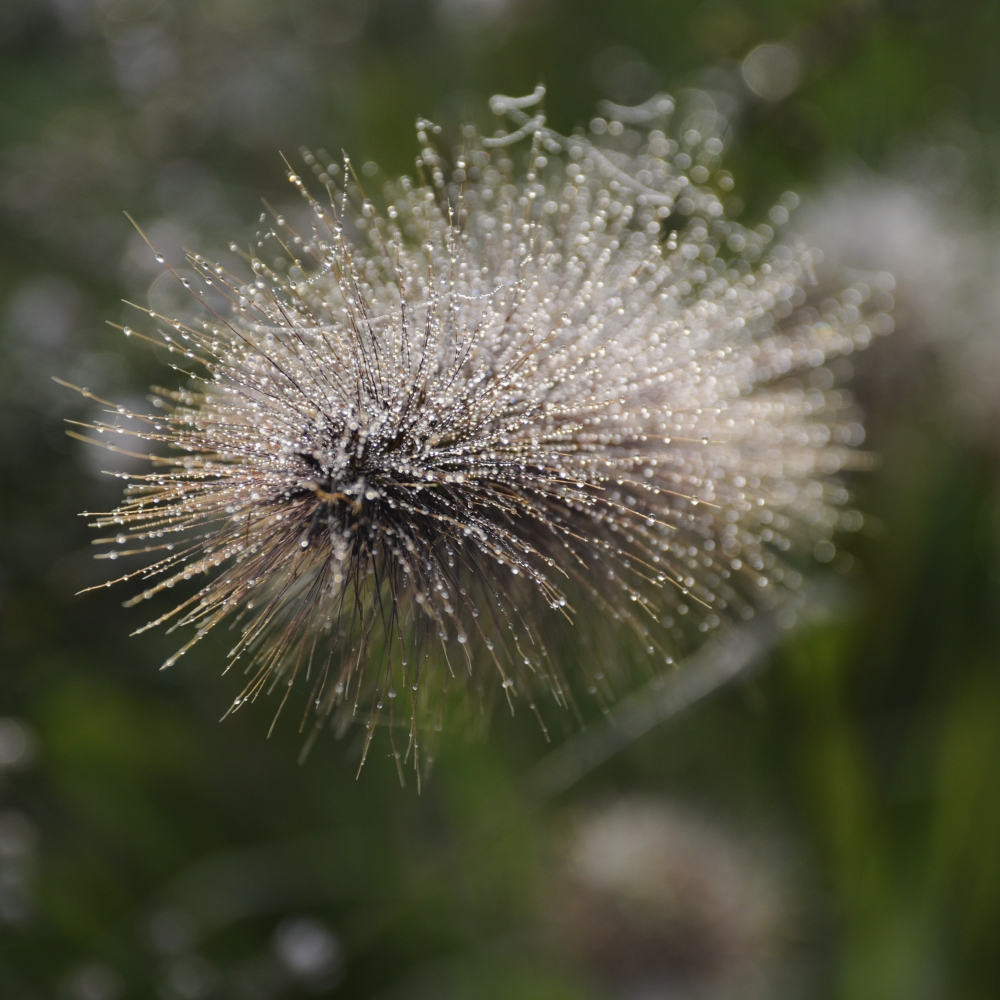2018 - A good year?
Is 2018 - a good year to remember, or not? Maybe not for some reasons, but, politics aside, ignoring natural and man-made disasters, bad tempers and bad news in general, here is the good news round up of 2018 in the small corner of the world occupied by Arthur Road Landscapes.
A new year, a new day and a new camera on the beautiful island of Barbados. Not too much in the way or horticulture here but when the landscape looks like this who needs a garden?
But of course I couldn’t resist another visit to Hunte’s Gardens.
Having cleverly avoided the Beast from the East, but running full pelt into the Mini-beast, I made a beeline for the Palm House at Kew for a bit of warmth and humidity.
The cold winter and the sudden arrival of a very warm, but late, spring (who knew what was to come?) meant a very good year for bluebells. This little woodland of oak and ash was discovered by my parents in deepest Berkshire.
May means Chelsea. This was my favourite garden, by Sarah Price. Not everyone’s cup of tea, but definitely mine, I’m just waiting for a commission for somewhere in the Med…
At the end of May I visited Lukesland on the edge of Dartmoor. Spring was a little later here so this Wisteria was still in its full glory.
June sees the climax of our native wild flowers. Driving around Surrey I love the road side verges covered primarily in ox-eye daisies. Parts of the M25 are quite spectacular, something to enjoy whilst sitting out a traffic jam. It’s quite tricky finding somewhere to park and photograph them (I haven’t stopped to take any photos on the M25 I hasten to add).
The heat wave started around the middle of June I seem to remember. I went to Loseley Park before the weather began to take its toll and the White Garden here was looking splendid. Of course the thing about white gardens is that they’re not completely white.
July and August seem to have been swallowed up in a blaze of sweltering heat and guilt about using a hosepipe (sorry/not sorry) but at the end of summer I went to The Homewood in Surrey. I hadn’t expected much of the garden but even I was charmed by the heather, Scots pines and rhododendrons.
A very busy autumn meant little time for visiting gardens but I did manage to get the odd half hour or so on Wimbledon Common. Being outside in bright sunshine whenever possible is my way of dealing with short days and long dark nights.
This is beginning to sound like I haven’t done much work in 2018. Well it’s been a funny old year, a mixture of feast and famine. This sweet little courtyard in Twickenham was completed early in the year. The owners are bird mad so hopefully this spring will see a few new residents in the bird boxes.
A large back garden project which has taken a couple of years, was finally planted in October. There’s not too much to see plant-wise at the moment but I’m looking forward to seeing it develop next year.
Maybe not a vintage year but not a bad one either.
Like these photos? Follow me on Instagram.
The evolution of a garden
I first met M&S in May 2012. They had been living in the converted dairy for about 18 months before starting to focus on the garden. They wanted a modern country garden but without roses, delphiniums or pinks, and their most immediate priority was to create a visual barrier between the garden and the passing dogwalkers.
I first met M&S in May 2012. They had been living in the converted dairy for about 18 months before starting to focus on the garden. They wanted a modern country garden but without roses, delphiniums or pinks, and their most immediate priority was to create a visual barrier between the garden and the passing dogwalkers.
The design took about nine months to finalise and then it was a further three months or so before the contractor started work.
What originally looked like a field turned out to be a thin layer of so-so turf, by now more than knee high, over the broken up hard standing of the milking parlour. And under the rubble lay several huge blocks of concrete and a couple of underground chambers. Several diggers and grab lorries later, plus tonnes of new topsoil and by June 2013 the garden was almost ready for planting.
Most of the planting was done in July 2013, but not before a massive weeding job was done on the new borders (the result of not mowing for the best part of two years, and being next to a field). The plants looked pathetically small when they went in. The fact that it was a mini heatwave meant the hose was on a lot on the first few weeks.
By August though some of the perennials were really going for it. The hedge of Calamagrostis, planted to help keep the neighbouring dog walkers at bay, was being stubbornly slow to put on any height.
During the winter the new tree, a Sorbus aria Lutescens had gone in, plus a new hedge of beech whips. The grass hedge was still low though and the dog walkers enjoyed the view of the garden for a bit longer.
By April the hundreds of bulbs planted in the autumn were starting to appear, giving a shot of bright colour. The red ones were supposed to be tall but turned out to be comically short compared to the Queen of the Night and Ballerina tulips. The perennials have bulked up a bit through the autumn and are starting to put on a growth spurt.
The first perennials in flower are the Euphorbias and Salvias, punctuated by lots of Alliums. The neighbour's builder wasn't impressed that everything seemed to be blue.
By June 2014 the Salvias are still going strong and the Penstemons, Cenolophium and Sanguisorba are broadening the colour palette.
This garden really takes off in July. Although it faces north there are no tall buildings nearby and most of the trees are on the northern boundary so the whole garden is in sun almost all day. The tall perennials and grasses grow straight up and only a few need staking after heavy rain. The colours are very rich, just what M&S wanted. The bees love the mix of Echinaceas, Verbena and Agastache. And finally the Calamagrostis hedge is tall enough and dense enough to block the view of the dog walkers.
It's still looking really good in August 2014 with the late summer flowers from Echinacea, Gaura and Sedum with the grass Anemanthele filling out.
From August into autumn there's a gradual fading of colour in the garden. But even on a wet November day the structure of the plants is still good, making the garden interesting even in rubbish weather.
The structure of most of the plants holds out until January 2015 and this is how the garden looked before the big cut down. In early spring we mulched the garden, partly to improve the still fairly heavy clay and also to help keep some of the weeds at bay. The former was more successful than the latter.
The display in July 2015 was even more spectacular than the previous year.
By July 2016 most of the perennials have reached maturity. We are starting to notice one or two problems though. The lovely blue Agastache has given up the ghost after a winter of very heavy rain. And two patches in the garden are causing some problems, one because it seems to get inexplicably wet and the other has no apparent cause. In the latter some of the Cenolophium and Calamagrostis have died. Yet both are doing well just a few yards away. We've replanted both areas since, with mixed results. It's still a work in progress but Japanese Anemones seem to tbe managing quite well.
And here we are in July 2017. We have already divided some of the Rudbeckias and Calamagrostis to plant elsewhere in the garden. Some years the Euphorbias are splendid, some years they just die. The Anemanthele, a short-lived grass, has pretty much had it. Some have been replaced but this autumn the gaps could be filled by the successful Veronicastrum virginicum. The Salvias have had a bit of a time with slugs and snails and the weeds are unrelenting. But finally the beech hedge has formed an almost solid screen between the garden and the field.
In the years between making a start on the garden and now the clients have built a new garage, converted the old garage into another room, built a kitchen garden, filled in a ditch, had a baby and adopted two hedgehogs. I'm still hopeful the pond that was part of the original design but postponed indefinitely might be on the cards again.
Gardens,are always changing, making them unbelievably infuriating at times but also marvellously challenging and rewarding.
Return to the Hungry Cyclist's Garden
It's a treat to go back to a garden you've fallen in love with and see it anew in a different season.
Last time I was in The Hungry Cyclist's garden it was, literally, blazing June with many of the flowering perennials at their peak
Now at the end of September its the turn of later flowering plants, fruit and trees.
The low light early in the morning (8am rather than 5.30) filters through the wilting flowers and grasses, highlighting the dew and cobwebs.
The stalwarts of late summer include Sedums and Persicarias, whilst Lavander and Perovskia are just about hanging on to their faded blue stems.
The fruit trees are fully laden, the changing leaves are drifting towards earth and a deep mist hangs across the valley after a night of heavy rain.
It's tempting at this time of year to get into tidy-up mode. But if you do it now you face a long winter of stasis
This is when you might be glad of a little more structure in the garden, like these rough square beds, creating views across the garden.
At the other end of the day the light is softer.
Early evenings in autumn are a real pleasure in good weather, a good time to enjoy the view.
And the fruits of nature.
The Hungry Cyclist/Gardener.
A big thanks to Tom, Chris, Desna, Nicola, Rob, Sarah and Susannah for a fab week. And finally, the real star of the garden - Mirabelle
The Hungry Cyclist - www.thehungrycyclist.com
The best long-flowering plants
At the height of summer some gardens are beginning to run out of steam. I'm always on the look-out for flowers that have staying power and these are some of my favourites.
Verbena bonariensis is one of the most requested plants by my clients, even if they don't know its name. It flowers on tall wiry stems from June until mid-autumn and will only lose its structure after a heavy frost. It doesn't live long but as any gardener will tell you Vb self sows with complete abandon, almost to the point of being really annoying. Give it lots of sun and almost any soil except really heavy clay. Vb's little brother Verbena lollipop grows well in a pot if you're strapped for space.
Looks good with Echinacea purpurea, Helenium Waldtraut and Calamagrostis x acutiflora Karl Foerster.
Anthemis tinctoria starts a bit earlier in the year. Most, like A.t. Sauce Hollandaise or EC Buxton, prefer light and free draining soils and should be cut back hard after flowering. They make good cut flowers if you can bear to take them out of the garden.
Looks good with Geranium Rozanne, Knautia macedonica and Verbascum chaixii.
One of the stars of the late summer garden Aster x frikartii Monch starts flowering in July and will go ontil mid-autumn. Loved by insects, this plant likes fertile soil with some moisture to produce its best efforts although it will survive most conditions.
Looks good with Euphorbia characais Humpty Dumpty, Penstemon Alice Hindley and Rudbeckia fulgida var, sullivantii Goldsturm.
Penstemon Garnet is my go-to plant for a reliable red flower that doesn't get powdery mildew and lasts more than one summer. Like many plants in this list it likes full sun and fertile soil. I've had some disasters with heavy clay soil. It is not 100% frost-proof so whilst I dead-head it through the summer I don't cut it back fully until early spring. Confusingly this is also callled Penstemon Andenken an Friedrich Hahn and you will often see both names on the label. Most Penstemons are equally long-flowering and other favourites of mine include the deep purple P. Raven and the light blue P. Alice Hindley.
Looks good with Centranthus ruber Alba, Pennisetum Red Buttons and Salvia sylvestris Dear Anja.
Another great red flower, Potentilla Gibson's Scarlet is at the fire-engine end of the spectrum. It's great for the front of the border but give it plenty of room as the flower stems reach out further than you would think if planting early in the year. Full sun and well-drained soil will keep the plant happy.
Looks good with Geum Princess Julian, Agapanthus Black Pantha and Gaura lindheimeri Siskyou Pink.
If you can only have one of these plants in your garden this is the one I'd go for. Rudbeckia fulgida var. sullivantii Goldsturm flowers from July until late autumn and continue to look good through the winter if the weather is not too wet and windy. And, even better, it loves heavy clay soils, perfect for London.
Looks good with Helenium Moerheim Beauty, Verbena bonariensis and Phormium Yellow Wave.
Rosa Iceberg can be grown as a shrub but as it is pretty vigorous I think it's better as a climber. It produces a magnificent flush in June and if you dead-head properly it will continue to flower on and off until December. It doesn't have a strong scent but is usually pretty healthy. Like most roses is is as happy as Larry in clay soil.
Looks good on its own.
Winner of the RHS Flower of the Decade competition Geranium Rozanne doesn't really get into its stride for a month after most of the other blue Geraniums like G. Orion or G. Johnson's Blue. But once it does get going there is no stopping it, most I know go on until November and they don't need dead-heading. It will even grow in quite a bit of shade but for the best results plant in full sun in almost any soil except that which is waterlogged.
Looks good with Persicaria amplexicaulis Firetail, Phlomis russeliana and Salvia nemoraosa Caradonna.
The poster flower for the millenial trend of prairie planting Echinacea purpurea will probably outlast many others that don't like the general dampness of our climate. Strikingly architectural, even after the colour has faded, they are a favourite of gardeners and pollinating insects alike. It can take a few years to bulk up so it's not a plant to be impatient with. It likes full sun and well-drained but not dry soil - not picky at all - but worth it. This one is E.p. Magnus Superior but there are many different varieties and colours. I've not had much luck with the orange ones but E.p. White Swan is a reliable and good-looking culltivar.
Looks good with Gaura lindheimeri Whirling Butterflies, Sedum spectabile Autumn Joy and Calamagrostis brachytricha.
And finally, Erigeron karvinskianus, sometimes called E.k. Profusion or Mexican Fleabane. This is the plant you will see self-sown in the paving at National Trust properties. It flowers ceaselessly from May until November and does not need dead-heading; the newly emergent flowers are white, fading to pink as they age. It's great at the front of the border, keeping weeds at bay with its carpeting growth, and I like to plant it in pots. It's fairly unfussy about the conditions it grows in making really good value for money and it's self-sowing habit means it's quite difficult to kill!
Looks good with Olea europea, Stipa tenuissima and Sisyrinchium striatum.
Return to Allt-y-bela
Unable to resist another invitation to see Allt-y-bela, I trogged down the M4 in the pouring rain.
Last time I was here it was raining too. But, like then, the sun did come out, briefly. In late July this garden is all about the cottage garden and the vegetable plot. In early June it's all roses and wild flowers
It's the wild flower meadows that help the garden merge with the surrounding landscape. Of course they're not really wild in the sense of always having been here; they haven't, they've been planted and sown in the last ten years, but you wouldn't know it just by looking.
But even old wild flower meadows need to be managed - mown at the right time to allow seeds to fall and germinate, the flowers not allowed to lie in situ after mowing but be picked up so the soil fertility doesn't increase and additional species planted that may or may not be typical wild flower meadow plants. Like these Trollius.
The meadows are in fact quite a bit of work, but definitely worth it I think.
The roses were over by the time of my visit last year but this time they were just getting into their stride. I'd love to be able to tell you the names of them all but I found myself a bit distracted.
As the garden is in a bit of a valley the scent is captured and remains in the air, even on a wet day.
Often I have clients say they don't want any roses in their gardens. Memories of municipal monoculture or a faint whiff of the crematorium perhaps? But when planted amongst other shrubs or perennials they can really shine when in flower and disappear into the background when they've finished.
And roses' ability to climb makes them doubly useful, especially if you are short of space or have a few old apple trees that might not be looking their best.
Having a beautiful house does give you a bit of a head start in the gardening stakes. It does take a degree of bravery to turn an off-white ugly duckling into an uskan orange beauty (yes the typo is deliberate).
And when garden designers witter on about good bones and structure this is what they are refering to - good quality hard landscaping that has a beauty and a purpose and fantastic evergreen plants.
Or purple ones.
Chateau Villandry
My first vist to Chateau Villandry was pretty inauspicious. On a cycling tour of the Loire with friend Helen, I was pretty chateau'd out by the time we got to Villandry. Helen was still game for yet another chateau tour but I opted to sit outside and read a book. A couple of decades later (maybe more), on another cycling holiday, I found out what I'd missed.
There's been a building on this site since 1189 but the Chateau as it stands to date was built around 1536. It was the last of the great renaissance chateaux to be built along the Loire. By the 19th century the chateau had an English style park around it but in 1906 it was bought by a Spaniard, Joachim Carvallo, who was determined to reinstate the original renaissance gardens.
The gardens are extremely formal, symmetrical, loaded with symbolism and mostly set out in the form of parterres. This means they are best viewed from above, historically from inside the chateau, but also from various vantage points around the garden. The scale of the gardens, and the intensity with which they are gardened, is quite astonishing.
The Ornamental Garden contains several parterres symbolising different forms of love - "tender love", "flighty love" etc, etc. Another parterre contains a Maltese Cross, a Languedoc cross, a Basque cross and stylised representations of fleurs de lys.
At the top of the garden is a huge ornamental lake set out in the shape of a Louis XV mirror. At first I thought this quite a boring part of the garden, there is little planting here, just a few pieces of topiary and some fountains set below a cloister-like walk under lime trees. However, it is the least busy part of the gardens (in terms of pattern and planting) and feels quite restful.
The Sun Garden is the most recent addition to the gardens at Villandry, designed in 2008 to make the centenary of Carvallo's restoration. It consists of childrens' room (a must these days I suppose), a sun room of oranges and yellows (my favourite)
and a cloud room of blues and whites.
One part of the garden, which doesn't seem to have a name, combined the formality of a box parterre with the informaility of planting in the Sun Room.
The blue flowers are mostly Perovskia and Salvia uglinosa and the pink are Gaura Rosyjane.
The largest part of the garden is the vegetable garden. Although the production of fruit and vegetables seems to be important the emphasis is on combining colour schemes with botanic science. The garden is planted twice a year and is now organic. Everything is still planted in box-lined symmetrical beds of course.
Companion planting is used to protects crops from pests and diseases.
One of the best things about gardens like this is finding corners that you're not sure you're supposed to be in, like this glasshouse. More art nouveau than renaissance, but still fab.
As usual there wasn't time, and less inclination, to go inside the Chateau. There was a tearoom but it was outside and it was raining and I didn't think the tea would be up to much. And there was the thought of dinner here - http://www.letapegourmande.com/ to keep me going. It was worth it (as was the long walk uphill to get there).
Thanks to Rachel and Chris for a fab holiday.
Chateau Villandry - http://www.chateauvillandry.fr/en/ By the way - ten full-time gardeners work here...
For more information about the bike ride - https://inspiringbikerides.co.uk/bike-ride/france-the-loire/
Allt-y-bela
Allt-y-bela is designer Arne Maynard's garden in Monmouthshire. Initially, it was Arne's intention to make a simple garden using his favourite components - roses, topiary and wildflower meadows. There was no garden here when Arne bought the restored medieval farmhouse five years ago, just a few outbuildings set across an ancient drover's road.
The topiary, mostly set around the house, is huge and dramatic, and seemingly randomly placed. His gardener, Steve, said it was not unusual for Arne to receive deliveries of large pieces without much forethought as to where they would be placed.
None of the pieces are alike and there is no attempt at placing them in a formal pattern. The larger pieces are a mixture of yew, hornbeam, purple beech and box. Low hawthorn hedges have just been planted to create rustic edges for the few formal borders.
There is a pleasing lack of formality to the garden as it is the designer's intention to blue the boundaries between the garden and the wider landscape. Beyond the immediate vicinity of the house the garden is surrounded by wildflower meadows. At the end of summer the flowers have all faded but in spring thousands of bulbs are in flower, designed to make the meadows look as though they've been there for hundreds of years.
In keeping with the house's agricultural history there is a productive and beautiful Kitchen Garden.
By the way, the house was white when Arne bought it. I don't know how he came to choose orange as the right colour to paint it but it makes a stunning backdrop to the garden, mainly because green really stands out against it. And when you've got an orange house you need a few orange flowers.
Next to the Kitchen Garden is the Cottage Garden, full of flowers to be cut for the house. The paths are made from stone found around the house and are angled to provide interesting glimpses of other parts of the house. These foxgloves are Digitalis ferruginea gigantea.
Despite his best intentions Arne has been unable to resist the urge to go beyong his original brief. The stream behind the old granary has been canalised with local stone and divides the stage from the terraces that form the Garden Theatre.
The gardens immediately outside the house are more complex, though still informal.
The Courtyard Garden at the front is enclosed with a pleached hedge and filled with smaller pieces of topiary and cottage-style planting, making for an interesting view from the kitchen.
One of my favourite spots in the garden is at the back of the house. Box hedging reaches out towards the meadow.
It is here the roses are most in evidence. Although by late summer they are mostly past their best they must look and smell amazing in June.
Back towards the front of house, next to the granary, is Arne's latest project, the Lattice Garden. Low hedges of hawthorn frame herbaceous planting and topiary.
espite being a two-time gold medal winner at Chelsea, there's still room a little whimsy in the garden (or was it there already when he bought the property?).
Little of this garden would be possible without full-time gardener Steve Lannin. Although the topiary is only trimmed once a year apparently it can take weeks to get all the way round the garden. Steve was a warm and knowledgeable host on our visit and really brough Arne's design ideas to life.
t is difficult to explain how much I enjoyed this garden; it's quite different to any other garden I have seen. There really is a blurring between the garden and the wider landscape and the huge topiary adds unexpected scale and drama. I didn't feel as though I were in a garden in the normal sense - there were no boundaries - just endless possibilities of walking round the garden with different views at each turn. Quite an achievement.
The garden at Allt-y-bela is not open to the public but group visits can be arranged. Alternatively, you can stay in the house as a B&B and have the garden all to yourself.
Allt-y-bela - http://arnemaynard.com/portfolio/gardens/my-garden-in-wales/#.V8bC9aJM1YU
Steve Lannin's garden diary - http://arnemaynard.com/journal/garden-diary/?tag=Steve%20Lannin#.V8bDcaJM1YU
Hauser & Wirth
Durslade Farm in Bruton, Somerset, is the latest outlet for the international art dealers Hauser & Wirth. In 2013 they commissioned Dutch plantsman Piet Oudolf to design a garden for the gallery. The plants were supplied by our favourite nursery, Orchard Dene, and the garden was planted in the spring of 2014, one of the wettest on record.
Those of you familiar with Oudolf's style will not be surprised to see huge borders of long-flowering perennials with little in the way of traditional structural plants like evergreen shrubs. For those of you not familiar with his style the garden can appear unstructured and lacking in focal points. There tends not to be the huge summer climax followed by assiduous cutting back, pruning and tidying that we are used to in traditional English gardens.
Rather the garden starts slowly in the spring. But once the perennials get going there is wave after wave of billowing flowers and grasses. As summer moves into autumn the seed heads of faded flowers start to predominate. Rather than cut them back Oudolf leaves the seed heads to stand as long into the winter as possible. Indeed, Oudolf selects his plants as much for the way they move into senescence as he does for their colour in high summer.
September marks a shift in focus from colour to form. Here we can see the seed heads of Echinacea pallida silhouetted against the still frothy flowers of Deschampsia. Oudolf is not obsessed by mixing and matching colours but by combining shapes and textures.
There are few tradtional English gardeners who would put orange and pink in the same view but here Oudolf is contrasting the cone shaped flowers of Helenium Moerheim Beauty with the flat heads of Sedum matrona with some fluffy Pennisetums and amorphous Asters.
This way of designing with plants has been termed "The New Perennial Movement" and Oudolf is its pre-eminent practitioner. The most notable way of imlementing this idea is with "block" planting - single species in large groups to make a big impact. As an idea it has been going longer than I've been a garden designer and it has influenced my own planting design.
Oudolf's ideas have not remained stuck in a rut however. He has picked up on the scientific developments in matrix planting. This is based on the work carried out primarily at Sheffield University by Professors James Hitchmough and Nigel Dunnet and also by Dr Noel Kingsbury.
Matrix planting combines plants that do not compete with one another. They may flower at different times and have completely different forms and, to a certain extent, different requirements in terms of light and water. A lot of their research was brought to bear on the summer meadow planting at the Olympic Park in 2012. Matrix planting produces more of a tapestry effect and at Hauser & Wirth Oudolf has used block planting in some borders and matrix planting in others, to great effect.
Enough of the garden design theory. It was a beautiful day when I went with friend and fellow designer Lisa Cox. There was thick fog most of the way from London but it was just starting to lift as we arrived. The garden didn't open until 10am so we had to amuse ourselves with second breakfast and a walk around the gallery.
The sun was hazy and at a low angle, perfect autumn weather. Its always a difficult balance between looking at the whole garden, taking it all in, and looking at parts of the garden through a lens.
Photography does focus your concentration though and makes you look at things you might miss on a broad sweep across the garden. However, it does also mean that people don't always recognise the garden you are photographing as they are not looking at it in the same way.
Taking photos does highlight some peculiarities. For example, I took this one of Verbena bonariensis. Beloved of New Perennial designers and these days ubiquitous, I suddenly realised that this was the only one in the whole garden. Surely this wasn't intentional? A mistake then - but by whom? Or is it a joke? We also saw one lone Lobelia...
Hauser & Wirth in Somerset is primarily concerned with art. There is some sculpture outside, some more successfully placed than others. The giant clock in the garden is a bit wierd I think but the spider in the courtyard is striking. There is a book shop and of course, a cafe and restaurant.
As we were there early there was time for second breakfast of coffee and toast and jam. Reasonably priced, tasty and in an art-filled cafe, I enjoyed it all. The farm buildings have been restored in a fabulously rustic/trendy style - lots of concrete, wood, clay tiles and old brick walls.
The Hauser & Wirth experience is not to everyone's taste of course, one client described it as "a pretentious place, nasty art and not at all my idea of a garden!". I can't do anything about her taste in art but I do hope she'll go back and have another look at the garden.
Hauser & Wirth Somerset - http://www.hauserwirthsomerset.com/garden
Orchard Dene Nurseries - http://www.orcharddene.co.uk/














